This free launching math workshop unit of study is designed to help you get a workshop approach started in your classroom.

This is another free resource for teachers from The Curriculum Corner.
Math workshop is not as common in classrooms as writing and reading workshops. If we see success with conferencing and working with small groups in reading and writing, we can also carry this concept over into our math instruction.
Incorporating a workshop approach into your classroom can be a little overwhelming as you get started. We are trying to make the process a little less stressful by providing complete units of study to assist you.
What are the benefits of using a math workshop approach?
- Provides students with manageable pieces of instruction
- Gives students the practice they need
- Allows for one-on-one teacher conferences
- Provides opportunity for differentiation
- Wraps up with a discussion and review of the new skill that is being taught
Just like all other areas of instruction, the most important part of creating a math workshop that is successful is setting expectations.
Students need to understand expectations so that you can have meaningful and uninterrupted conferences with your math learners. You also need to be able to observe your learners closely to determine misconceptions or misunderstandings.
Use the lessons below to guide you through setting up a workshop format in your classroom. Because this unit is designed to build the foundation of your math workshop, the lessons will not necessarily address math skills and standards.
Some of our ideas stem from what we learned from our professional development based on Larry Ainsworth’s in Balanced Math approach.
What is Math Workshop?
The format for math workshop is much the same as a reader’s or writer’s workshop.
- Math Warm-Up/Daily Math Review – We have implemented a Daily Math Review (DMR) in our classrooms for several years. Our DMR was based on what Ainsworth has laid out in his work. It is a spiraling and class-specific daily review that is assessed weekly. The skills on the review are based on a broad range of standards and change as your class masters them. These weekly assessments can provide you with the data you will need to create small skill groups for remediation and eventually mastery. After looking at quiz results, you can then meet with small focused skill groups during independent practice or Math Centers (described below the workshop explanation).
- Math Mini-Lesson – After your warm up, you will move on to your mini-lesson. You will present a 5 to 15 minute mini-lesson that focuses on that specific concept or skill.
- Small Group Practice, Independent Practice & Conferencing – Following the mini-lesson, students move on to an organized small group or independent practice time.
During this time students could be:
*Completing a practice page or activity (might involve manipulatives)
*Participating in small group/partner games
*Working on an inquiry activity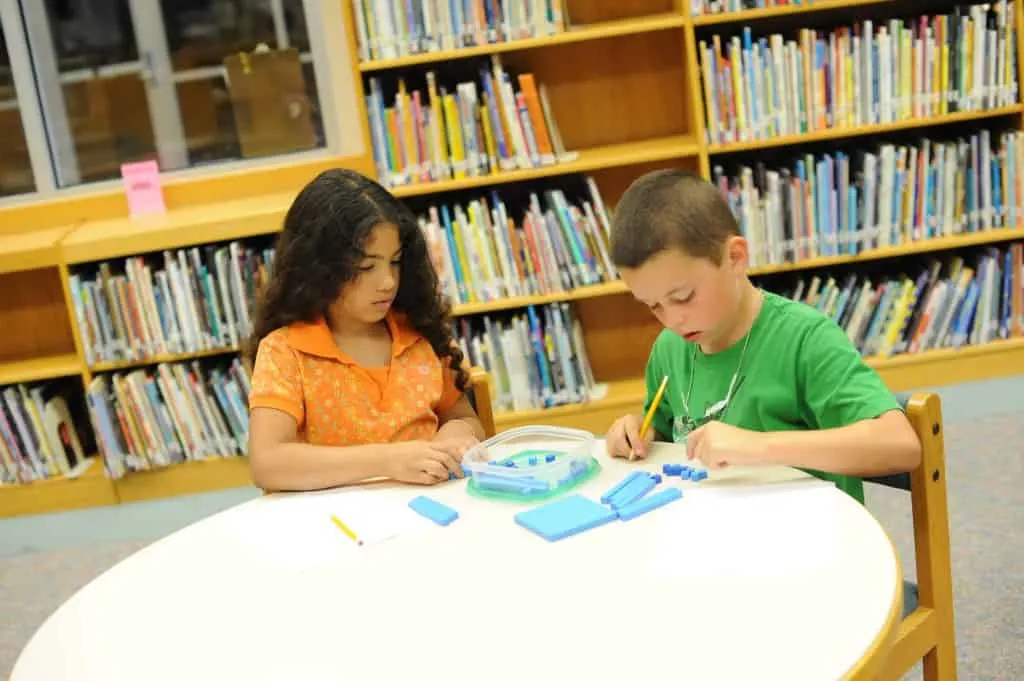
During this time the teacher might be:
*Making observations of learners
*Taking notes on student progress
*Conferencing with individual students
*Reteaching a skill to a small group
*Giving an enrichment lesson for students needing a challenge
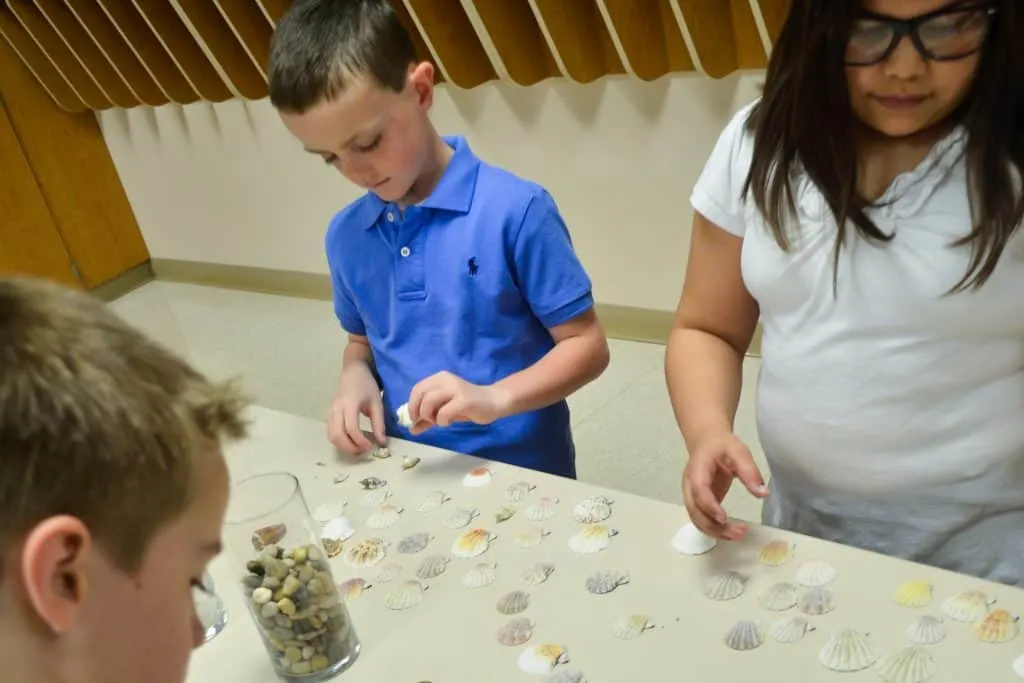
- Lesson Wrap-Up & Sharing – At the conclusion of independent practice, the class will gather to quickly review the lesson. Allow students to ask questions or share.
- Math Centers – Math centers might be used to give students extra practice with a skill. They can be great review of a skill but not always beneficial for students who are new to a skill. Be sure that the centers you choose can be successfully completed by your students. Center time will allow you time to work with individual students or small groups.
- Problem Solving – One final piece of math instruction that is important is problem solving. We have learned through our studies of Ainsworth’s work that students need consistent exposure to problem solving strategies and process. This instruction needs to be guided and modeled several times for students to internalize the process. Your goal is for students to understand how to think like problem solvers in math. There are many ways to teach the problem solving method, so find one that works for you and your students.
How can I manage all of the pieces of my math workshop?
Managing all of these parts can seem a little overwhelming as you begin. To help you plan and implement a successful math workshop, we have created our own management binder. This editable binder will give you the resources you need to make planning a little easier.
Launching Your Math Workshop Lessons
Below you will find our lessons for launching a math workshop. Choose the ones that work for you. Remember, the goal of your launch is to help students learn your expectations so that your math class will run smoothly as you begin working with small groups and conferencing.
**All of the resources we refer to within the lessons are provided in a single download at the bottom of this post. (Any exceptions are noted.)
 Lesson 1: What Our Math Workshop Looks Like
Lesson 1: What Our Math Workshop Looks Like
- Start your workshop by setting expectations. Brainstorm what you and your students should be doing during workshop. Use our What Our Workshop Looks Like Anchor Chart to help you with ideas. You will also find a blank anchor chart so you can write your class ideas instead of using ours.
- Have a simple math activity set up for independent practice time on this first day. Circulate the room taking notes about the workshop – things that are going well and things that need work.
- When you gather for your lesson wrap-up, discuss your notes and invite students to share how they felt and what parts of the anchor chart were successful as well as those that need work.
Lesson 2: Creating an Environment That Feels Safe
- An important aspect of any classroom is that students feel safe enough to ask questions without judgment. This is particularly true in a math environment. You don’t want students to practice skills the wrong way. Many times it is not an easy task to change something that a student has already created a pattern for in their mind.
- Today we start with a book about being brave or dealing with being nervous, taking risks or not being afraid to ask for help. We like The Girl Who Never Made Mistakes or I Can’t Do That, Yet.
- We want students to understand that we all have questions and we all make mistakes. It is ok to ask questions and to change our thinking as we learn. Another book we like is Leo, The Late Bloomer.
- A great book about learning in different ways and times is Robert Kraus’ Leo, The Late Bloomer.)
- Introduce the students to the Class Math Pledge and have them practice reading it together. Discuss each line how it applies to the math workshop. For independent practice today, provide another simple math task. After independent practice pull students together to review and recite the Class Math Pledge. Revisit your workshop anchor chart.
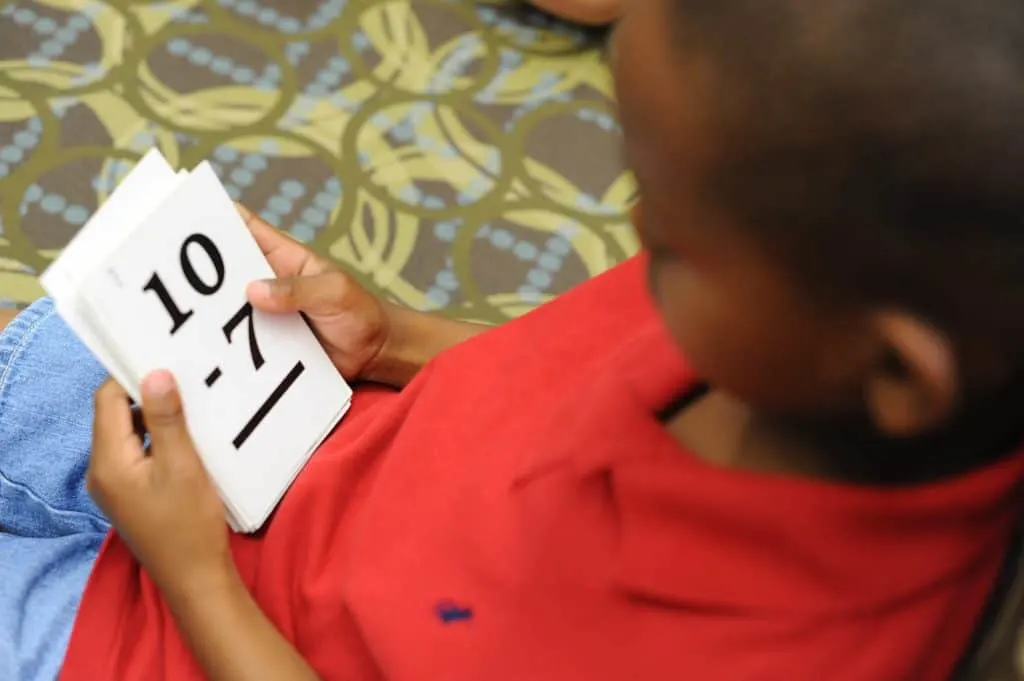 Lesson 3: The Importance of Math Fact Mastery
Lesson 3: The Importance of Math Fact Mastery
- Instruction for math facts can be controversial among teachers as we all have our beliefs about how they should be taught. This lesson is meant to help students understand why it is important that they know these facts fluently so that future skills are easier.
- To begin this lesson ask students what they had to learn first before they could begin to read (alphabet or letters). Then ask them why they had to know these letters in order to read (because they are the building blocks for making words, and then words are the building blocks for making sentences – which leads to reading, learning and understanding.) Guide students in a discussion to help them understand that math facts are similar. Knowing math facts quickly will help them with more difficult operations. Give an example of a big operations problem (3-digit number multiplied by another 3-digit number) to show them how it’s done, and illustrate your point by talking about how knowing the math facts quickly (without having drawing a picture or counting on fingers) can help solve the problem faster and easier.
- Today provide a math fact activity for practice. We like using games for this but you might also choose a pencil and paper option.
- Like the other days, you can circulate and take observational notes or sit and conduct a few math conferences.
- Gather students after independent practice and share your expectations for math fact practice at home and school, as well as your expectations for mastery.
What we believe about math facts: We actually believe in a mix of strategies – some involving timed tests – but ONLY if they are used in a stress free, motivating, safe and encouraging atmosphere. And we certainly don’t feel that they work for all students. Differentiation in the instruction and practice for learning facts has to occur. Most can agree that becoming fluent in math facts is necessary, or at the very least makes future math skills or concepts easier.
Some of our suggestions, ideas and resources for timed tests can be found here: Addition Subtraction Multiplication Division. Use our Math Fact Master Certificate that you can print for students.
Our Math Fact Menu can be a way to encourage practice at home.
Lesson 4: Being Respectful and Organized with Classroom Math Materials
- Give students a “tour” of your math manipulatives, supplies and tools. Show students where you keep them and your expectations for their use.
- This lesson is simply included as a suggestion so that students are clear about how, when and why to use what is available.
- During independent practice today, provide some activities that involve the use manipulatives in your classroom.
- Circulate and take observational notes on students and also gather ideas to share during the lesson wrap-up.
- Gather students after practice time and discuss what went well and what did not.
 Lesson 5: Problem Solving Strategies at a Glance
Lesson 5: Problem Solving Strategies at a Glance
- Throughout the year you will model and practice problem solving strategies. Give students an overview at the beginning with this lesson.
- Share our Problem Solving Strategies Chart. Share grade-level examples for each idea. Students can record an example in the squares of our Math Notes pages. These can go in student math folders.
- Today’s independent practice can simply involve assigning partners or small groups to complete one or two story problems. Let them choose a strategy they think will work for their problem.
- During this time you will circulate to lend support and ideas as needed. Take notes on conversations you hear . (These will be used in Lesson 6!!) Gather students at the end of independent practice time to discuss the strategies that they chose.
Lesson 6: Mathematicians Have Meaningful Conversations
- This lesson helps students understand that talking about math with other people can help them understand skills or concepts better.
- Gather students and do a short read aloud. You might want to choose a book that incorporates math. One we like is The Girl With a Mind for Math. Discuss the story and let students share ideas about their understanding and new knowledge. Explain that discussing a story helps them to understand it better and come up with new ideas. Let them know that math is the same. You expect that they will have LOTS of daily discussions about what they are learning!
- Math is going to be very social this year so that they can increase their understanding and gain new ideas!
- Share our Strong Mathematicians Poster. If you don’t feel like you need to print this one, you might use it as a slide to display on your SmartBoard for math this day.
- Use your notes from yesterday and share some of the great conversations you heard as they were problem solving.
- For independent practice today, give partners a few more word problems to solve and a large piece of construction paper. They will not only solve the problem but also explain their thinking.
- Gather students after independent math practice and share the conversations you were hearing. Ask students if they have any conversations that they took part in that they feel made them stronger mathematicians.
Lesson 7: Problem Solvers Have a Process for Their Thinking
- We want students to get into a pattern with their approach to problem solving. This will make problem solving less stressful if students already have a plan in place.
- To begin this lesson, choose a couple of story problems to use. (You can find some here: Fall Problem Solving Cards.)
- Share our How Problem Solvers Think anchor chart.
- Work through your chosen problems while using the anchor chart and completing each step. Students can participate as you share your own thinking to model how this process works. Refer to the new anchor chart often, as well as using the problem solving strategies anchor chart if needed.
- For independent practice today, pair students with a partner and give each set the same problem to think about and solve using this process.
- During your math wrap-up today, go through the problem together as a class. You will discuss and share your thoughts on the process.
Lesson 8: The Importance of Daily Math Review
- Daily Math Review is a great way to help students continually review skills. At the beginning of the year, we begin with skills from the previous year.
- We have always created our own DMR using a template like this one: Editable DMR PowerPoint Template (This is an editable PowerPoint file, click the title to download.) We like creating our own so that we can make it match the needs of our students. If this is a place where you would like to save a little time, you can also find already made math review books on Amazon. (We will share a few at the bottom of this post.)
- We would always have four days for practice and give a quiz over the skills on Friday. After students completed the work each day, we would check the answers together. It is very important to make sure that you are giving students help who need it each day. The quiz was a way for us to make sure all students were understanding the content.
Lesson 9: How to Help a Friend
- This lesson stresses the fact that your Math Workshop will be a social time for your class.
- During your mini-lesson, share that your expectation is that each will all be needed to help you teach math this year. All will be called upon to help a friend who might be struggling with a math concept.
- Remind them about how everyone develops and learns at different paces. They will all experience times when they understand something well and times when they need some help and more practice.
- Tell them that you will need them to help their friends at various times, but that there is a way to work with a friend that is NOT a good thing – and that is when they simply tell their friends answers.
- Discuss how this will not help to TEACH because giving answers does not give students the knowledge to solve problems on their own when they are asked to do so. You can use our How to Help a Friend Anchor Chart for this.
- Today’s independent practice should involve some type of partner work – perhaps another problem to solve.
- Gather students together after independent practice and share some of the situations you saw where friends were helping friends effectively.
Lesson 10: Interactive Notebooks
- If you will be using interactive notebooks, this lesson is for you!
- The purpose of this lesson is not to provide you with how you will do use notebooks. This lesson is incorporated into the math launching unit because we feel it is important that students have some procedures and guidelines in place before they start.
- To begin, pass out the notebooks to each student and explain to them a little bit about interactive notebooks. Share that they can be a fantastic resource because they will begin to fill up with notes, sample problems, teacher feedback, definitions and many other math ideas.
- Students will write Math Notebook Guidelines/Rules (whatever you want to call them) on the inside cover.
- Have students record your class guidelines. Here are a few ideas:
- I only write about math in my notebook.
- All of the pictures I draw will be there to help me understand my math work.
- I will write, cut and glue everything neatly in my notebook so I can easily use it to help me.
We like something like this for the final “rule”:
-
- I will always look for work in my math notebook before I ask my teacher a question.
- Use our Check My Notebook Reminder Slip if you would like. You might also type your class guidelines instead of having students copy on their own.
- For independent practice today have students spend time decorating their notebook covers with things that remind them of what math is.
You will find our resources for math workshop here: Launching Your Workshop
(We have provided the anchor charts in color and with a white background.)
Looking for Additional Math Workshop Resources? Start Here!
- Academic Math Notebook
- Math Vocabulary for Primary Grades
- Tools for Math Workshop
- Editable Math Management Binder
You can download our free Math Tub Labels here:
Blue Arrows with Pictures (PDF)
Strategies for Problem Solving:
Problem Solving Involving Fractions
Addition and Subtraction Word Problems
Making a Table to Solve Problems
Drawing Pictures to Solve Problems
Problem Solving: Two-Step Word Problems
Writing Number Sentences to Solve Problems
You might be interested in some of the resources mentioned within our post. Contains affiliate links:

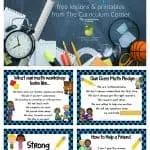
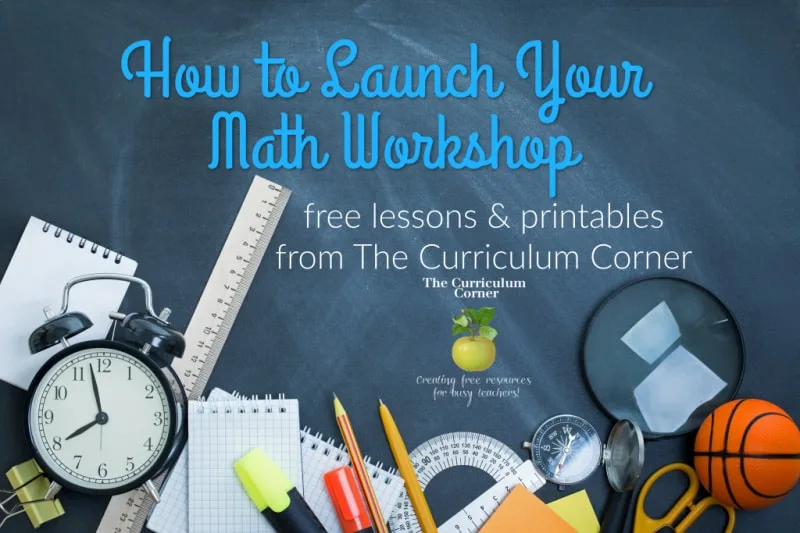
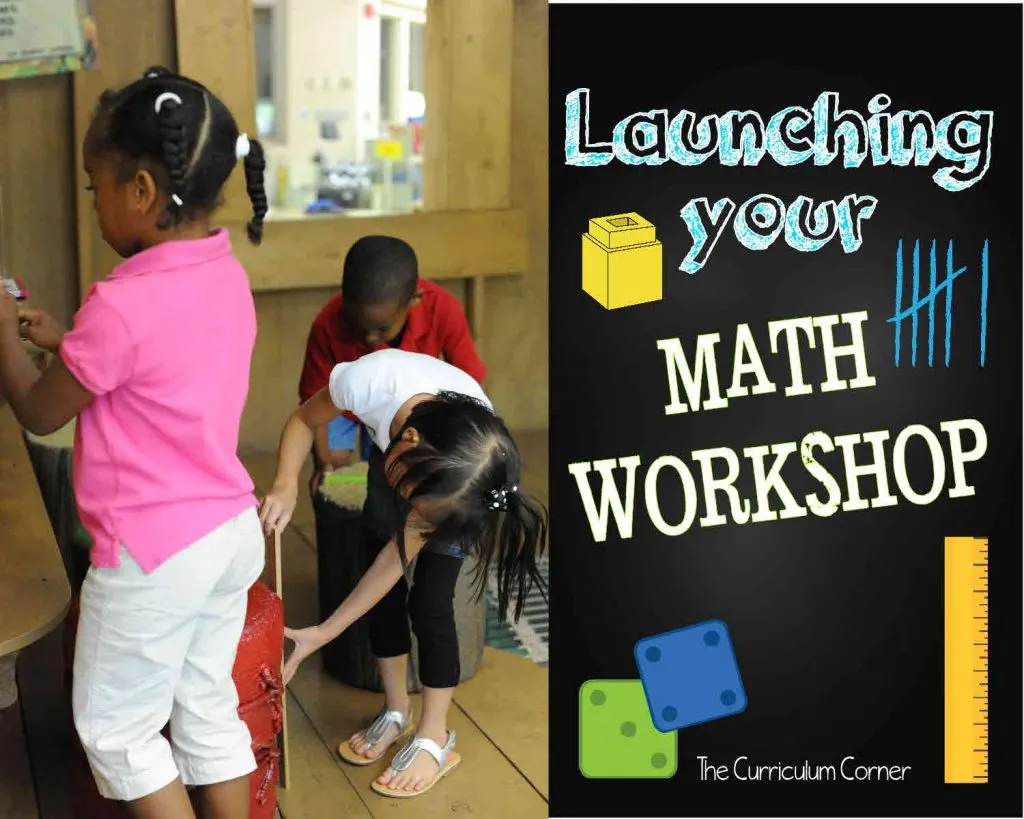
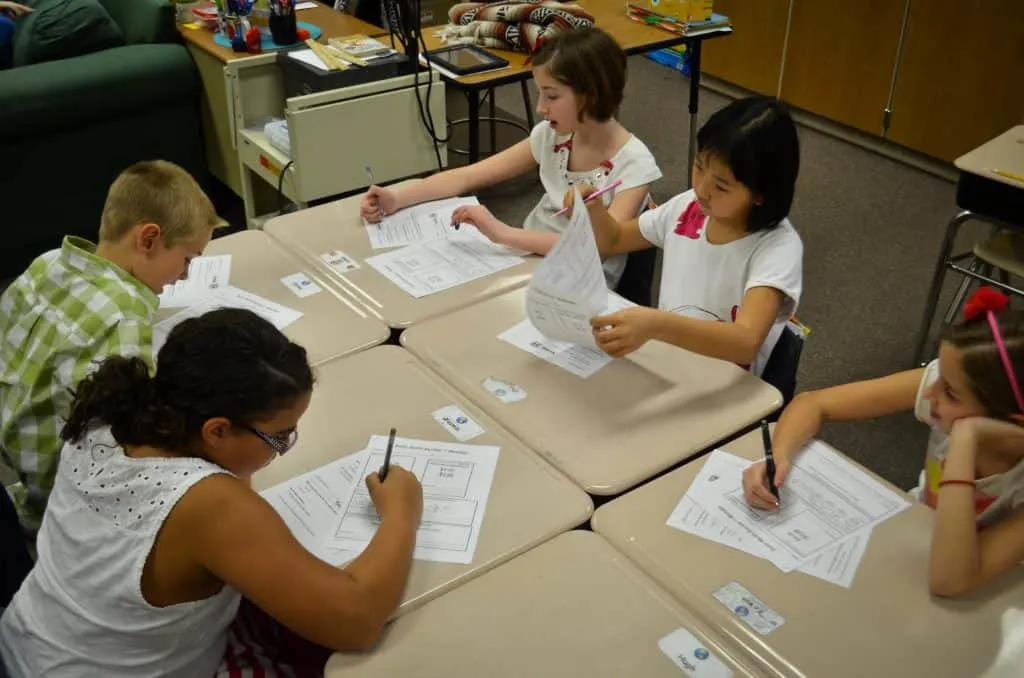

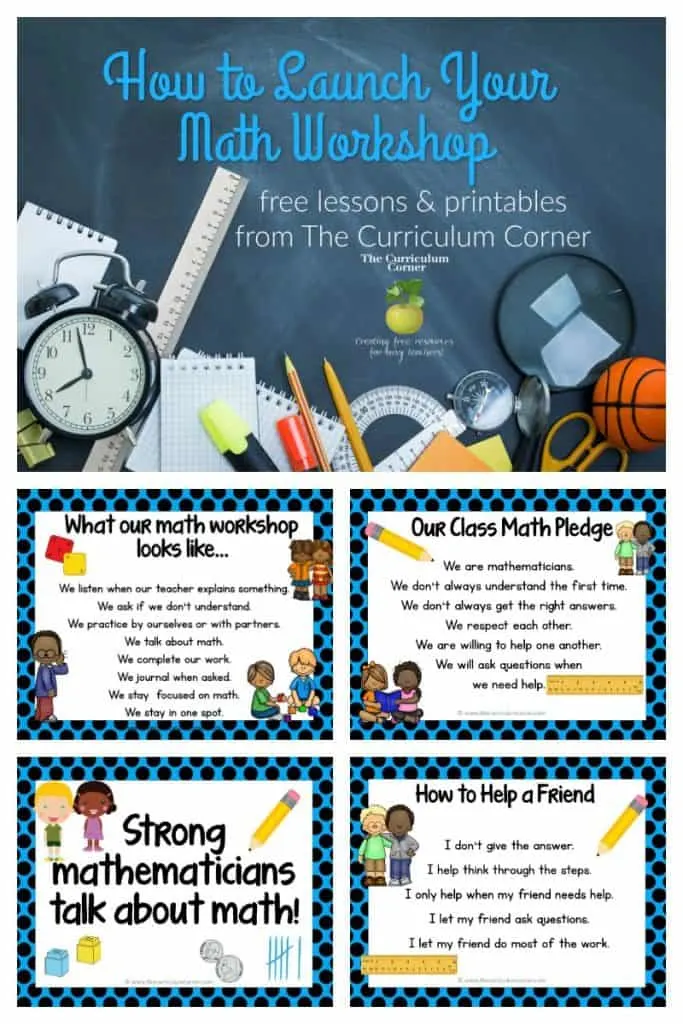
Mrs King
Monday 24th of July 2017
I would like to add a technology resource to your list of wonderful Math Stations/Centers. I use ZEARN.org this was a God send just like your site was for me. It includes Engage New York math Strategies (Common Core) and is great for independent center time and you can get student reports. And better yet, it is FREE just like your site. Thank you, Thank you, Thank you for such a great resource.
Caroline Camons
Sunday 24th of January 2016
How do I even begin to thank you for this website! There are so many gems on here that I need but don't have the time to make. I appreciate all your tips, ideas and activities!
Melinda
Monday 17th of August 2015
Thank you so much for all of the valuable information. I have been wanting to set up MATH Workshop in my classroom and wasn't sure of how to go about it for the maximum benefit for my students. All of the practical and procedural information you have shared is just what I needed to step into this school year with confidence!